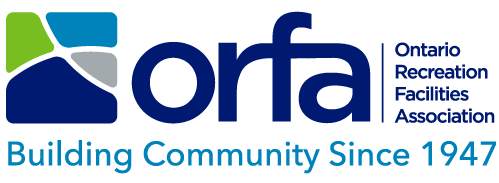- ORFA Home
- Resource Centre
- Technical Corner
- Dealing with Ontario’s Recreational Aging and Environmental Tree Inventory Risk
Technical Corner
Dealing with Ontario’s Recreational Aging and Environmental Tree Inventory Risk
July 26, 2023
Trees are an essential component of our environment. However, falling trees and/or branches have the potential to cause serious injury. Tree risk management falls under Occupier Liability law RSO 1990, c O.2 | Occupiers' Liability Act as an owner of a property is responsible for maintaining safe premises free from known dangers to persons inside the property and individuals outside of the property. A property owner can be held liable of tree or limbs of trees that fall on unsuspecting individuals causing property damage and/or personal injury.
The likelihood of being injured by falling trees is considered low risk but Ontario has been experiencing an increase in risk associated with its green canopy as the natural aging of these assets is being sped up by environmental weather change. Injuries in Windsor LaSalle teen transferred to London hospital after tree branch injury [more] and Toronto Falling branch injures woman in Trinity Bellwoods [more] in 2023 highlight the need for communities to continually evaluate tree health and condition. As recreation departments continue to embrace asset management, living infrastructure becomes a challenge to manage for risk of failure. Larger communities have been active in evaluating tree condition with smaller communities being aware of the issues and responsibilities while struggling to find adequate resources to be proactive in managing these assets.
Recreational green spaces, specifically trees, require a “tree-care program”. This includes actively inspecting the condition of each tree for wounds or damage that may lead to failure. Tree injuries can lead to decay where bacteria, viruses or insects can gain access to the tree causing additional damage or kill the tree. High winds, heavy snow and ice are challenge that can often be identified by properly trained staff. What can go unnoticed is damage to the tree root system that can be caused by a lack of or too much water. Injured roots weaken the foundation of the tree, and with time and the advancing decay process, can cause such a tree to eventually blow over in a storm. Being proactive by adding soil to exposed roots is recommended by does require an investment that is often not allocated in the budget process.
Facility managers must have an inventory of electrical powerlines located on their property as the electrical supplier is often responsible for vegetation management on road allowances, but not tree trimming or maintenance of trees and vegetation on customer property. This is the responsibility of the owner. Avoid planting trees near any power lines or electrical equipment, such as poles, to ensure newly planted trees and shrubs never interfere with nearby power lines or electrical equipment. If a tree must be planted near a power line on your property, first check with your municipality to ensure all by-laws are followed and that any easements on your property are respected [more].
The ORFA understands the limitations of many operations in meeting every risk reduction responsibility. However, our obligation as industry leaders is to “manage” community assets by providing administrative staff with information relevant to financial decision-making matters. The ORFA Recreation Facility Asset Management (RFAM) software is considered one of the most advanced tools that a facility manager has available to assist in managing all infrastructure under their portfolio. Being in a position that confirm commitment to these responsibility by proving diligence is an attainable goal.
Comments and/or Questions may be directed to Terry Piche, CRFP, CIT and Director, Training, Research and Development, Ontario Recreation Facilities Association
|
Note: The publisher, (Author(s)/General Editor(s)/Licensor(s)) and every person involved in the creation of this communication shall not be liable for any loss, injury, claim, liability or damage of any kind resulting from the use of or reliance on any information or material contained in this communication. While every effort has been made to ensure the accuracy of the contents of this communication, it is intended for information purposes only. When creating this communication, none of the publisher, the (Author(s)/General Editor(s)/Licensor(s)) or contributors were engaged in rendering legal or other professional advice. This communication should not be considered or relied upon as if it were such advice. If legal advice or expert assistance is required, the services of a competent professional should be sought and retained. The publisher and every person involved in the creation of this communication disclaim all liability in respect of the results of the any actions taken in reliance upon information contained in this communication and for any errors or omissions in the works. They expressly disclaim liability to any user of the work. |
